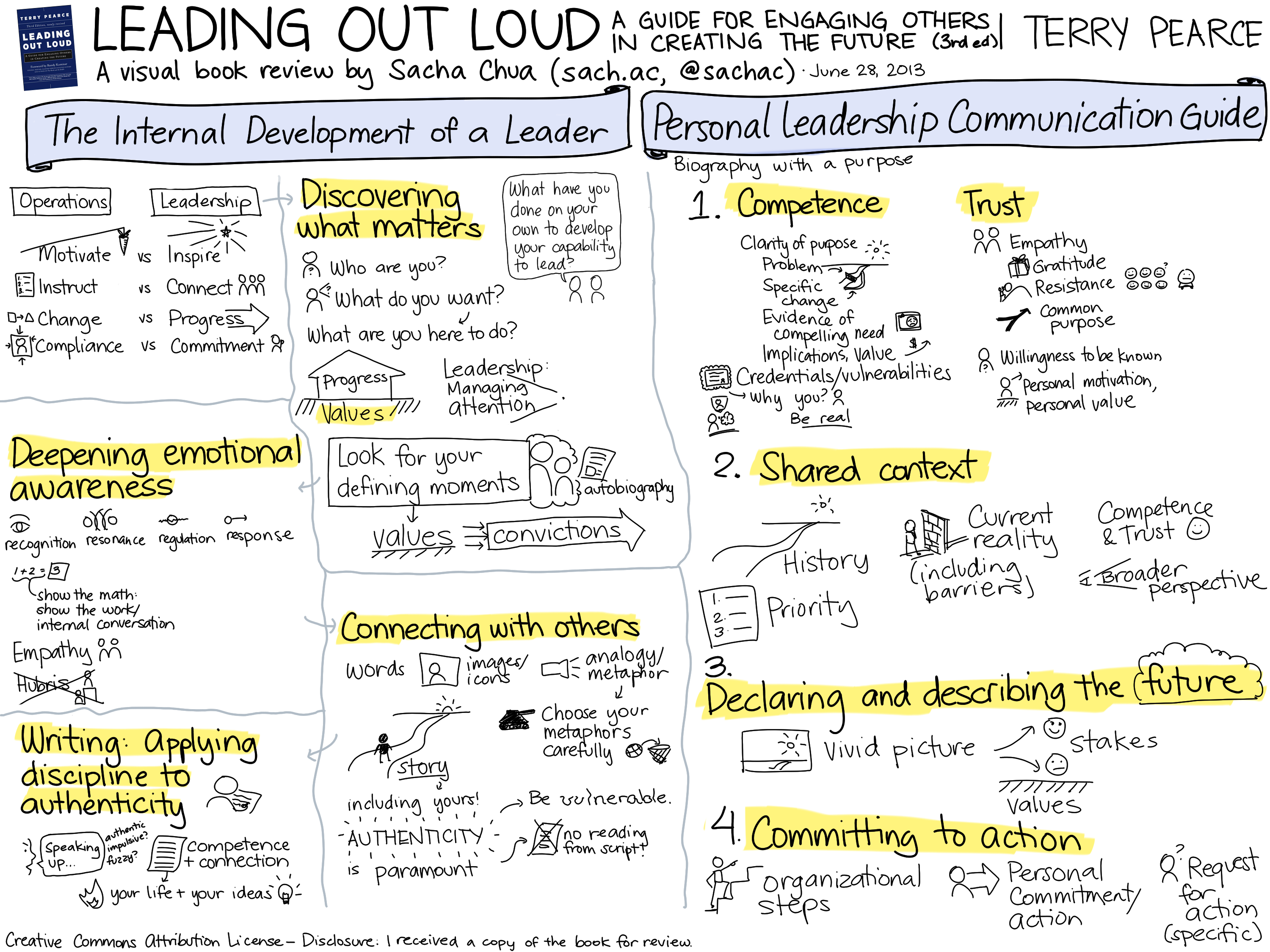Book: Leading Out Loud
Posted: - Modified: | book, communication, leadership, presentation, reading, speakingLeading Out Loud: Inspiring Change Through Authentic Communications
Terry Pearce, 2003
Excellent advice on being authentic. Good point starting p133 about when not to take questions, and how to address difficult questions.
When not to take questions:
If the speech is your first advocacy for a change, it is likely to be more abstract and less specific, written to inspire with context and values. Questions could prove frustrating for you and your listeners, and could drain away the excitement that your initial speech has generated. If your audience is large, taking questions is logistically difficult. The process needs to be tailored both to allow representative questions to be asked and to avoid ill feelings in someone not recognized due to time constrains.
… More typically the size of audience and nature of material are not prohibitive, and in such cases you should always offer the audience the chance to clarify, contribute, or challenge your comments. When others can really participate, they are more likely to feel ownership and commitment. In offering to take questions, you are offering a direct relationship to individuals, in addition to the group as a whole. You build expectations of candor in the audience, and can greatly enhance or damage the credibility and trust you have constructed during the speech.
p133, Terry Pearce, Leading Out Loud, 2003
These are the five primary elements of the invested listening model:
- Answering the stated and unstated question
- Acknowledging feelings
- Finding common intent
- Distinguishing between your context, or point of view, and the questioner’s point of view
- Checking in: making sure that you have been responsive
p139, Terry Pearce, Leading Out Loud, 2003
Leading Out Loud is well worth revisiting and keeping around for inspiration.

